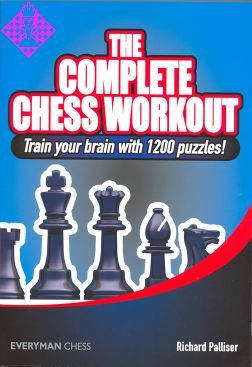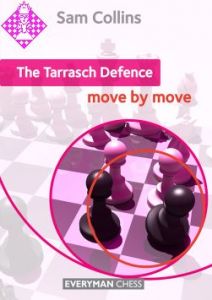Artikelnummer
LXPALTCCW
Autor
The Complete Chess Workout
318 Seiten, kartoniert, Everyman, 1. Auflage 2007
Vorübergehend ausverkauft
All top chess players agree that to keep your tactical muscles in shape it's imperative to continue training, and the easiest and most fun way to do this is by performing tactical exercises. Even solving a few puzzles for ten minutes each day can be of the utmost benefit for the aspiring player. But where can one find the required number of suitable puzzles to satisfy this demand?
Look no further than The Complete Chess Workout. In this book, tactics expert Richard Palliser presents the reader with a massive 1200 puzzles, all checked for accuracy by the latest computer engines. There is something for players of all levels here: a huge number of basic tactics - forks, pins, skewers and checkmates - to appeal to beginners and improvers, and several brain-teasers that will tax even the strongest of players. Palliser has meticulously collected puzzles from practical play in recent years - a large percentage of the exercises here will be completely new to most readers. All the important tactical themes are covered, while there are special sections on opening traps and endgames. Work your way through this book, and your opponents will soon be on the receiving end of your increased tactical powers!
A comprehensive training manual for chess tactics
Ideal for all levels of player
All puzzles checked by computer engines
Introduction
Spending as little as 10-15 minutes a day on one's tactical ability really can reap dividends. I can certainly testify to that myself and it's always very welcome to see a pupil regularly trying to solve a number of tactical exercises: not only do they become more tactically alert, but they also improve their clock handling and gain in confidence.
During the past decade some quite challenging puzzle books have appeared, aimed chiefly at the level of the stronger club player and above. These are a most welcome develbut are perhaps not the best tactical training for less experienced players or even average club players. Some attempted solving of very tough positions is a good thing, esif the solution is then studied in some detail, but such works are unlikely to provide the budding student with a grounding in the fundamentals of tactical and attacking play.
Wanting to produce a book that would improve the tactical knowledge of the average player led me to drawing up categories of both the more common attacking motifs (bishop sacrifices on h7 and knight sacrifices on f7 being two main examples) and the less usual (such as a queen sacrifice on h6). Thus there are a number of examples of each key theme in this work which should, I hope, help to cement these important ideas into the reader's subconscious, thereby improving both their attacking and defensive ability.
One cannot, of course, blindly attack in every game: the right conditions to attack must be present, such as a chip in the opposition king's pawn wall or the ability to quickly transmany of one's pieces to the attacking zone. Many of the puzzles in this work deal with attacking scenarios and should help the reader to further appreciate just when and why an attack is likely to work.
What, though, of the many games in which we don't get to attack? In these tactical play is no less likely to occur and it's important to always be alert to tactical opportunities. One very handy way of not letting these pass by is to keep in mind John Nunn's very useful mnemonic: LPDO ('loose pieces drop off). Indeed, it's very noticeable just how many tacare to do with a piece being undefended or poorly defended. The reader will become fully aware of the concept of LPs while working through the large chapter on attacking motifs, but so important is the topic that I've also included a later chapter devoted to both it and the related theme of overloading a defensive piece.
To remind the reader that tactics are present throughout the game, there are also chapdevoted to tactics in both the opening and the endgame, while the fiendish puzzles of Chapter Six should challenge even the very tactically able. I've also aimed to make things a little trickier throughout for the reader by not following the common practice of sorting each chapter by difficulty. Instead the order is much more like the tactical opportunities that occur in our games, being random (sorting alphabetically by tournament location is about as random as one can get!) and thereby simple tactics follow quite challenging ones and vice versa. Do be aware too that by no means every combination mates in style or wins heavy material; just as in real life, many of the puzzles included here only lead to the win of a pawn, while a few even see the side to move scrambling a draw through some tactical device or other.
I couldn't resist including a few classic favourites among the 1,200 puzzles, but even those with an excellent knowledge of the classics should find the majority of the positions included new. No less than 585 of the puzzles are from games played in 2007 and I've also drawn heavily on unpublished games collections: chiefly my own I'm afraid, but I'm also very grateful to a number of people who sent or supplied games: Chris Duggan, Scott Fraser, Paul Hopwood, Neville Pearce, Kieran Smallbone, Norman Stephenson, Sean Terry (editor of the excellent Oxford City CC magazine, Dislnformator), and Tim Turner.
I hope that this work will improve the tactical eye of the reader, while also reminding them of the many beautiful possibilities thrown up by our favourite royal game.
Richard Palliser,
York,
September 2007
Look no further than The Complete Chess Workout. In this book, tactics expert Richard Palliser presents the reader with a massive 1200 puzzles, all checked for accuracy by the latest computer engines. There is something for players of all levels here: a huge number of basic tactics - forks, pins, skewers and checkmates - to appeal to beginners and improvers, and several brain-teasers that will tax even the strongest of players. Palliser has meticulously collected puzzles from practical play in recent years - a large percentage of the exercises here will be completely new to most readers. All the important tactical themes are covered, while there are special sections on opening traps and endgames. Work your way through this book, and your opponents will soon be on the receiving end of your increased tactical powers!
A comprehensive training manual for chess tactics
Ideal for all levels of player
All puzzles checked by computer engines
Introduction
Spending as little as 10-15 minutes a day on one's tactical ability really can reap dividends. I can certainly testify to that myself and it's always very welcome to see a pupil regularly trying to solve a number of tactical exercises: not only do they become more tactically alert, but they also improve their clock handling and gain in confidence.
During the past decade some quite challenging puzzle books have appeared, aimed chiefly at the level of the stronger club player and above. These are a most welcome develbut are perhaps not the best tactical training for less experienced players or even average club players. Some attempted solving of very tough positions is a good thing, esif the solution is then studied in some detail, but such works are unlikely to provide the budding student with a grounding in the fundamentals of tactical and attacking play.
Wanting to produce a book that would improve the tactical knowledge of the average player led me to drawing up categories of both the more common attacking motifs (bishop sacrifices on h7 and knight sacrifices on f7 being two main examples) and the less usual (such as a queen sacrifice on h6). Thus there are a number of examples of each key theme in this work which should, I hope, help to cement these important ideas into the reader's subconscious, thereby improving both their attacking and defensive ability.
One cannot, of course, blindly attack in every game: the right conditions to attack must be present, such as a chip in the opposition king's pawn wall or the ability to quickly transmany of one's pieces to the attacking zone. Many of the puzzles in this work deal with attacking scenarios and should help the reader to further appreciate just when and why an attack is likely to work.
What, though, of the many games in which we don't get to attack? In these tactical play is no less likely to occur and it's important to always be alert to tactical opportunities. One very handy way of not letting these pass by is to keep in mind John Nunn's very useful mnemonic: LPDO ('loose pieces drop off). Indeed, it's very noticeable just how many tacare to do with a piece being undefended or poorly defended. The reader will become fully aware of the concept of LPs while working through the large chapter on attacking motifs, but so important is the topic that I've also included a later chapter devoted to both it and the related theme of overloading a defensive piece.
To remind the reader that tactics are present throughout the game, there are also chapdevoted to tactics in both the opening and the endgame, while the fiendish puzzles of Chapter Six should challenge even the very tactically able. I've also aimed to make things a little trickier throughout for the reader by not following the common practice of sorting each chapter by difficulty. Instead the order is much more like the tactical opportunities that occur in our games, being random (sorting alphabetically by tournament location is about as random as one can get!) and thereby simple tactics follow quite challenging ones and vice versa. Do be aware too that by no means every combination mates in style or wins heavy material; just as in real life, many of the puzzles included here only lead to the win of a pawn, while a few even see the side to move scrambling a draw through some tactical device or other.
I couldn't resist including a few classic favourites among the 1,200 puzzles, but even those with an excellent knowledge of the classics should find the majority of the positions included new. No less than 585 of the puzzles are from games played in 2007 and I've also drawn heavily on unpublished games collections: chiefly my own I'm afraid, but I'm also very grateful to a number of people who sent or supplied games: Chris Duggan, Scott Fraser, Paul Hopwood, Neville Pearce, Kieran Smallbone, Norman Stephenson, Sean Terry (editor of the excellent Oxford City CC magazine, Dislnformator), and Tim Turner.
I hope that this work will improve the tactical eye of the reader, while also reminding them of the many beautiful possibilities thrown up by our favourite royal game.
Richard Palliser,
York,
September 2007
| EAN | 9781857445329 |
|---|---|
| Gewicht | 635 g |
| Hersteller | Everyman |
| Breite | 17 cm |
| Höhe | 24,7 cm |
| Medium | Buch |
| Erscheinungsjahr | 2007 |
| Autor | Richard Palliser |
| Sprache | Englisch |
| Auflage | 1 |
| ISBN-13 | 9781857445329 |
| Seiten | 318 |
| Einband | kartoniert |
| Name | Everyman (former Cadogan) |
|---|---|
| Adresse | 10 Northburgh Street London EC1V 0AT Großbritannien |
| dcaddelman@yahoo.com |
Verantwortlicher Importeuer:
| Name | Schachversand Niggemann |
|---|---|
| Adresse | Schadowstraße 5 48163 Münster Deutschland |
| info@schachversand.de | |
| Internet | www.schachversand.de |
005 Introduction
007 1 Warming Up
024 2 Attack!
121 3 Opening Tricks and Traps
132 4 Skill in the Endgame
149 5 Loose Pieces and Overloading
181 6 Fiendish Calculation
190 7 Test Yourself
211 8 Solutions
007 1 Warming Up
024 2 Attack!
121 3 Opening Tricks and Traps
132 4 Skill in the Endgame
149 5 Loose Pieces and Overloading
181 6 Fiendish Calculation
190 7 Test Yourself
211 8 Solutions
Der Internationale Meister Richard Palliser legt sein schachliches Fitness-Programm für das tägliche Hirnjogging vor: 1200 Taktikaufgaben sollen nach und nach geknackt werden. Die ersten 100 sind zum Aufwärmen gedacht (Kapitel 3: Warming up), daher leichter zu löIm mächtigen zweiten Kapitel muss 579 mal attackiert werden (Attack!), anschließend sind Eröffund -fallen anzuwenden (Opening Tricks and Traps, 60 DiaWarum nennt Palliser im Lösungsteil nicht auch die Eröffnungszüge, die zu den Fallen führDann lernte der Leser solche Fallen auch selber zu stellen oder zu meiHier zeigt sich einmal mehr, und das gilt für alle Verlage von Schachbüchern, wie wenig Autoren und Lektoren über den Nutzen ihrer Bücher für uns Leser und über gute Didaktik nachdenken. Zwei weitere Beispiele: Auf jeder linken Seite steht oben der Titel des Buches -wozu? Als Leser kenne ich den Buchtitel, er muss mir nicht 160 mal wiederholt werden. Ich weiß, diese Macke ist vielen anglo-amerikanischen Büchern eigen. Ähnlich unweil ohne neue Information für den Leser, wirkt die Everyman-Marotte (in diesem Buch gleich 1200 mal!), vor die Spielernamen weiße und schwarze Kästchen zu setzen - obwohl schon jedem Anfänbekannt ist, dass der Erstgenannimmer Weiß hat. Die Namen der Spieler wurden stur zweimal geerst über den Diagrammen, dann nochmals bei den Lösungen. Everyman hätte den Platz klüger nutzen und ein Namensregister ersollen! Das Buch enthält keiSuchhilfen.
Zum „Kompletten Fitness-Training" gehören auch taktische Schläge im Endspiel, Kapitel 4 heisst Skill in the Endgame und enthält 99 Aufgaben. Das Merkkürzel ,LPDO!' ist seit John Nunns Ratgeber Schachgeheimnisse vielen Schachfreunden bekannt: „Loose pieces drop off!" Palliser trainiert ,LPDO!' gezielt, 190 mal fallen ungedeckte, lose Fivom Brett.
„Teuflische Rechenkunst" ist im sechsten Kapitel gefragt, dort sind die schwierigsten Aufgaben zu fin
Zum Schluss kann der Leser an 10 Tests mit je 12 Aufgaben (120 Diaprüfen, was er gelernt hat; anschließend wird das Ergebnis be
Pluspunkte
- Richard Palliser zeigt viel Neues, 585 Aufgaben stammen aus Partien dieses Jahres (2007).
- Ob schwer zu lösen oder leicht, die Aufgaben sind innerhalb der Kapitel gut gemischt.
- Alle Lösungen wurden mit dem PC geprüft.
- Der Autor erklärt knapp, meistens ausreichend. Seine kurzen sprachliAnmerkungen sind in einfaSchach-Englisch verfasst.
Aktuelle Mitbewerber
Im Oktoberheft 07 stellte ich zwei neue Aufgabensammlungen vor, beivor kurzem erschienen: A. Volokitin & V. Grabinsky, Perfect Your Chess (Gambit); und Ray Cheng, Practical Chess Exercises (Wheatmark). Während Palliser sich auf takAufgaben beschränkt, verlandie anderen Autoren auch strateÜberlegungen. Dabei fragt Cheng das breiteste Spektrum ab, das gilt für die Schwierigkeit der Stellunwie für die Vielfalt an Themen.
Anspruch
Mittlere Vereinsspieler (DWZ um 1600) sollten bei Palliser wie bei Cheng mindestens die Hälfte der Aufgaben zügig lösen können. Bei Volokitin & Grabinsky dürfte das selbst starken Amateuren (über 2000) kaum gelingen.
Fazit: 1200 mal Taktiktraining für Clubspieler. Pallisers Material ist aktuell, fast die Hälfte der Aufgaben stammt aus Partien dieses Jahres (2007). Kaufempfehlung, wenn eine große Sammlung von Taktikaufgain Buchform gesucht wird.
Mit freundlicher Genehmigung
Dr. Erik Rausch, Rochade Europa 1/2008
__________________________
„Train your brain with 1200 puzzles!”, so lautet der Untertitel des gerade neu erschienenen Buches von IM Richard Palliser. Beim Auspacken der Bücherlieferung war ich gerade auf dieses Werk besonders gespannt, zum einen, weil der Autor in der Vergangenheit bisher immer sehr gute Bücher für den Everyman Chess Verlag verfasst hat (unter anderem Fighting the Anti-Sicilians) und zum anderen, weil in letzter Zeit eine wahre Flut von Taktikbüchern auf dem Markt erschienen ist und es interessant zu erfahren war, wie sich dieses Buch von allen anderen besonders abheben möchte oder kann.
Der Inhalt des Buches (über 300 Seiten) erstreckt sich auf folgende sieben Teilbereiche:
Warming Up (hier werden kurzzügige Kombinationen zum aufwärmen dargeboten), Attack! (in diesem Abschnitt geht es um Taktik in Reinkultur, sämtliche taktischen Motive tauchen hier auf und verlangen nach einer Lösung), Opening Tricks and Traps (Eröffnungstaktik und Fallstricke), Skill in the Endgame (Endspieltaktik), Loose Pieces and Overloading (Überlastung von Figuren), Fiendish Calculation (Genaue Berechnung) und schließlich folgen im Anschluss noch 10 Tests mit dazugehörigen Lösungen.
Dazu vielleicht noch folgende Informationen: von den 1200 Aufgaben (jeweils sechs auf einer Seite) stammen 585 aus dem Jahr 2007, dem Leser wird also überwiegend aktuelles Taktikmaterial geboten. Außerdem wurden alle Stellungen mit Engineunterstützung überprüft auf mögliche Fehler. Sie mögen mir verzeihen, dass ich diese Aussage nur zum Teil überprüfen konnte (so weit ich feststellen durfte, hatte sich kein Fehler oder ähnliches eingeschlichen). Der Schwierigkeitsgrad der Aufgaben erstreckt sich auf einem Level von ca. 1600 bis 2000.
Doch zurück zu der eingangs erwähnten Frage, inwieweit sich dieses Buch von anderen vergleichbaren Werken unterscheidet. Ehrlich gesagt fallen mir keine stichhaltigen Argumente dazu ein um dieses Buch von anderen abzuheben. Das soll nicht als Kritik verstanden werden, der Autor hat sein Bestes getan, die Aufgaben sind gut ausgewählt und die meisten davon waren mir bisher noch unbekannt. Trotzdem finde ich die Idee eines Buches mit 1200 Taktikaufgaben nicht besonders originell, besonders weil es genügend gleichwertige Werke dieser Art bereits gibt. Das ist natürlich nur meine eigene Sicht der Dinge und vielleicht irre ich mich ja auch, aber ich kann mir nicht vorstellen, dass der Leser jeden Monat ein neues Buch mit 1000/10000 oder mehr Taktikaufgaben so leicht verdauen kann.
Fazit:
Wer noch kein vernünftiges Taktikbuch in seiner Sammlung besitzt, kann hier völlig getrost zugreifen, Palliser deckt mit seinen Aufgaben alle Bereiche des Schachspiels zufrieden stellend ab und gibt dem Leser die Möglichkeit, am Ende des Buches einen Selbsttest (genauer gesagt sind es zehn Tests) durchzuführen.
Mit freundlicher Genehmigung
Martin Rieger, www.freechess.de
Zum „Kompletten Fitness-Training" gehören auch taktische Schläge im Endspiel, Kapitel 4 heisst Skill in the Endgame und enthält 99 Aufgaben. Das Merkkürzel ,LPDO!' ist seit John Nunns Ratgeber Schachgeheimnisse vielen Schachfreunden bekannt: „Loose pieces drop off!" Palliser trainiert ,LPDO!' gezielt, 190 mal fallen ungedeckte, lose Fivom Brett.
„Teuflische Rechenkunst" ist im sechsten Kapitel gefragt, dort sind die schwierigsten Aufgaben zu fin
Zum Schluss kann der Leser an 10 Tests mit je 12 Aufgaben (120 Diaprüfen, was er gelernt hat; anschließend wird das Ergebnis be
Pluspunkte
- Richard Palliser zeigt viel Neues, 585 Aufgaben stammen aus Partien dieses Jahres (2007).
- Ob schwer zu lösen oder leicht, die Aufgaben sind innerhalb der Kapitel gut gemischt.
- Alle Lösungen wurden mit dem PC geprüft.
- Der Autor erklärt knapp, meistens ausreichend. Seine kurzen sprachliAnmerkungen sind in einfaSchach-Englisch verfasst.
Aktuelle Mitbewerber
Im Oktoberheft 07 stellte ich zwei neue Aufgabensammlungen vor, beivor kurzem erschienen: A. Volokitin & V. Grabinsky, Perfect Your Chess (Gambit); und Ray Cheng, Practical Chess Exercises (Wheatmark). Während Palliser sich auf takAufgaben beschränkt, verlandie anderen Autoren auch strateÜberlegungen. Dabei fragt Cheng das breiteste Spektrum ab, das gilt für die Schwierigkeit der Stellunwie für die Vielfalt an Themen.
Anspruch
Mittlere Vereinsspieler (DWZ um 1600) sollten bei Palliser wie bei Cheng mindestens die Hälfte der Aufgaben zügig lösen können. Bei Volokitin & Grabinsky dürfte das selbst starken Amateuren (über 2000) kaum gelingen.
Fazit: 1200 mal Taktiktraining für Clubspieler. Pallisers Material ist aktuell, fast die Hälfte der Aufgaben stammt aus Partien dieses Jahres (2007). Kaufempfehlung, wenn eine große Sammlung von Taktikaufgain Buchform gesucht wird.
Mit freundlicher Genehmigung
Dr. Erik Rausch, Rochade Europa 1/2008
__________________________
„Train your brain with 1200 puzzles!”, so lautet der Untertitel des gerade neu erschienenen Buches von IM Richard Palliser. Beim Auspacken der Bücherlieferung war ich gerade auf dieses Werk besonders gespannt, zum einen, weil der Autor in der Vergangenheit bisher immer sehr gute Bücher für den Everyman Chess Verlag verfasst hat (unter anderem Fighting the Anti-Sicilians) und zum anderen, weil in letzter Zeit eine wahre Flut von Taktikbüchern auf dem Markt erschienen ist und es interessant zu erfahren war, wie sich dieses Buch von allen anderen besonders abheben möchte oder kann.
Der Inhalt des Buches (über 300 Seiten) erstreckt sich auf folgende sieben Teilbereiche:
Warming Up (hier werden kurzzügige Kombinationen zum aufwärmen dargeboten), Attack! (in diesem Abschnitt geht es um Taktik in Reinkultur, sämtliche taktischen Motive tauchen hier auf und verlangen nach einer Lösung), Opening Tricks and Traps (Eröffnungstaktik und Fallstricke), Skill in the Endgame (Endspieltaktik), Loose Pieces and Overloading (Überlastung von Figuren), Fiendish Calculation (Genaue Berechnung) und schließlich folgen im Anschluss noch 10 Tests mit dazugehörigen Lösungen.
Dazu vielleicht noch folgende Informationen: von den 1200 Aufgaben (jeweils sechs auf einer Seite) stammen 585 aus dem Jahr 2007, dem Leser wird also überwiegend aktuelles Taktikmaterial geboten. Außerdem wurden alle Stellungen mit Engineunterstützung überprüft auf mögliche Fehler. Sie mögen mir verzeihen, dass ich diese Aussage nur zum Teil überprüfen konnte (so weit ich feststellen durfte, hatte sich kein Fehler oder ähnliches eingeschlichen). Der Schwierigkeitsgrad der Aufgaben erstreckt sich auf einem Level von ca. 1600 bis 2000.
Doch zurück zu der eingangs erwähnten Frage, inwieweit sich dieses Buch von anderen vergleichbaren Werken unterscheidet. Ehrlich gesagt fallen mir keine stichhaltigen Argumente dazu ein um dieses Buch von anderen abzuheben. Das soll nicht als Kritik verstanden werden, der Autor hat sein Bestes getan, die Aufgaben sind gut ausgewählt und die meisten davon waren mir bisher noch unbekannt. Trotzdem finde ich die Idee eines Buches mit 1200 Taktikaufgaben nicht besonders originell, besonders weil es genügend gleichwertige Werke dieser Art bereits gibt. Das ist natürlich nur meine eigene Sicht der Dinge und vielleicht irre ich mich ja auch, aber ich kann mir nicht vorstellen, dass der Leser jeden Monat ein neues Buch mit 1000/10000 oder mehr Taktikaufgaben so leicht verdauen kann.
Fazit:
Wer noch kein vernünftiges Taktikbuch in seiner Sammlung besitzt, kann hier völlig getrost zugreifen, Palliser deckt mit seinen Aufgaben alle Bereiche des Schachspiels zufrieden stellend ab und gibt dem Leser die Möglichkeit, am Ende des Buches einen Selbsttest (genauer gesagt sind es zehn Tests) durchzuführen.
Mit freundlicher Genehmigung
Martin Rieger, www.freechess.de
Mehr von Everyman
-
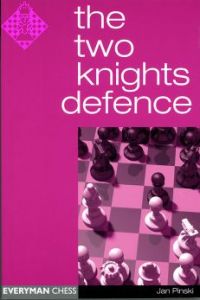 The Two Knights Defence18,50 €
The Two Knights Defence18,50 € -
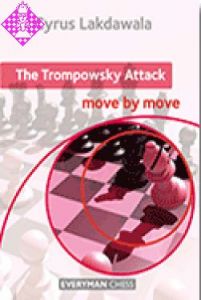 The Trompowsky Attack24,50 €
The Trompowsky Attack24,50 € -
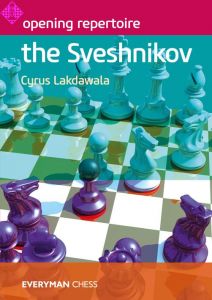 The Sveshnikov23,50 €
The Sveshnikov23,50 € -
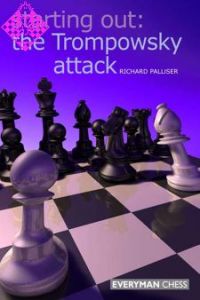 The Trompowsky Attack17,95 €
The Trompowsky Attack17,95 € -
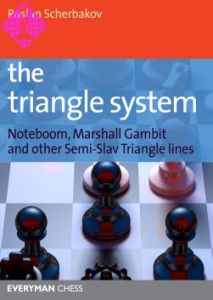 The Triangle System23,95 €
The Triangle System23,95 € -
 The Trompowsky18,95 €
The Trompowsky18,95 € - Mehr von Everyman

